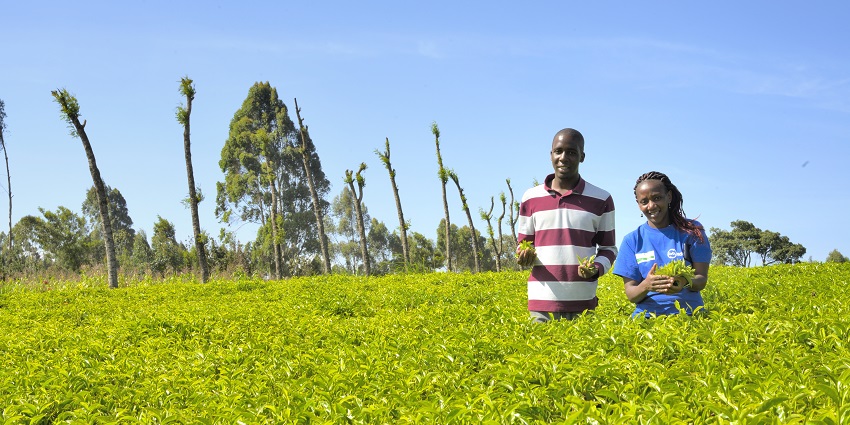By Céline Hyon-Naudin, Investment Manager, Grameen Crédit Agricole Foundation

Microfinance is the set of financial products and services accessible to people who are excluded from the conventional banking system. Today, the microfinance sector boasts 139 million beneficiaries for an estimated total of outstanding loans of $114 billion (1). Beyond the objective of fostering financial inclusion, microfinancing is constantly adapting and innovating to be a lever for economic development through entrepreneurship.
This financing of entrepreneurship is a common key point between microfinance and retail banking. As in the case of microfinance, retail banking provides solutions to promote income-generating activities. In the Booklet celebrating the Foundation’s 10th anniversary published last year, we compared the figures of the Foundation and a small-sized “average” (2) regional bank and identified several analogies. This article puts the spotlight on the common challenges identified.
A few points of comparison
Retail banks and microfinance institutions (MFIs) share certain objectives and operating procedures. For example, the commercial organization is similar to that of a conventional banking network with an account manager who manages a portfolio. They both exercise their activities in the heart of their territories close to their customers. Microfinance has evolved so as to diversify its offer of financial products, moving close to that of a retail bank: lending, savings, money transfers, insurance, mobile payments, investments, etc., reflecting the variety of needs of clients and businesses.
Furthermore, MFIs and retail banks are plying their trade by endeavouring to control their costs and risk, while aiming to generate a positive and resilient result capable of securing the sustainability of their mission.
For all that, the revenue and expenditure structure differs widely between the two models. The operating costs (for example, travel expenses of loan officers who have at least 250 to 300 clients) are high at an MFI: they account for 50% to 60% of the charges.
The revenue mix also has structural differences. The amounts and average term of loans are more modest in microfinance: microcredits are in general for a term of less than a year and the average loan (of our partners) is €765 compared with €16,000 for an average regional bank. An MFI has revenues linked almost exclusively to financing, contrary to a retail bank, which has a more extensive range of products and is less reliant on financing. The revenues of an MFI are essentially generated from the net financing margin: Interest on loans accounts for 88% to 99% of the revenues of MFIs, far more than the 51% of the average regional retail bank.
Interest rates in the microfinance sector are higher than those of a retail bank, particularly because of the operating costs. Nevertheless, ethics and the impact requirement are forcing the sector to optimize its operating costs. The table below provides a comparison of the expenditures, revenues and margins per customer of a partner MFI and a bank. Although there are sizeable variations between regions, the margin per customer is positive for the MFIs. Microfinance remains a viable economic sector, even if MFIs are facing significant challenges, which retail banks too are up against.
Common challenges for banking and microfinance
With 1.7 billion adults worldwide who still don’t have access to a bank account (3), microfinance and banking have to continue to innovate in order to reach them. Two lines of approach are available to them: digital finance and the resilience to climate change.
Digital finance is transforming the world of finance, making it more agile: New technologies provide digital financial services which are improving the operating efficiency of financial institutions and increasing the range of their service. Improving operational processes should make it possible to develop new distribution channels and to reach new markets. The dissemination of financial services by these new technologies constitutes a pillar of the current financial acceleration. The potential is significant: of the 1.7 billion adults who still do not have access to a bank account, one billion have a mobile telephone and 480 million have access to the internet (4).
The financing of the ecological transition is another common challenge. MFIs are strengthening the development of rural economies through their direct contact with small producers. Small farmers are already weakened by the small size of their farmland (80% have less than 2 hectares) and their low level of integration in agricultural sectors (only 7% are formally integrated in commercial value chains). Climatic change poses an additional risk as MFIs and retail banking alike have to innovate to grant loans better adapted to agricultural cycles and risks and to promote new cultivating practices that encourage resilience and adaptation to climate change. Microfinance and retail banking are accordingly positioning themselves around financial solutions such as those that are fostering access to green energy to promote the ecological transition.
These common challenges are bringing together the two branches of the financial system which play a powerfully inclusive role in economic development and social and environmental progress. There are many synergies to capitalize on between microfinance and the banking sector.
______________________________________